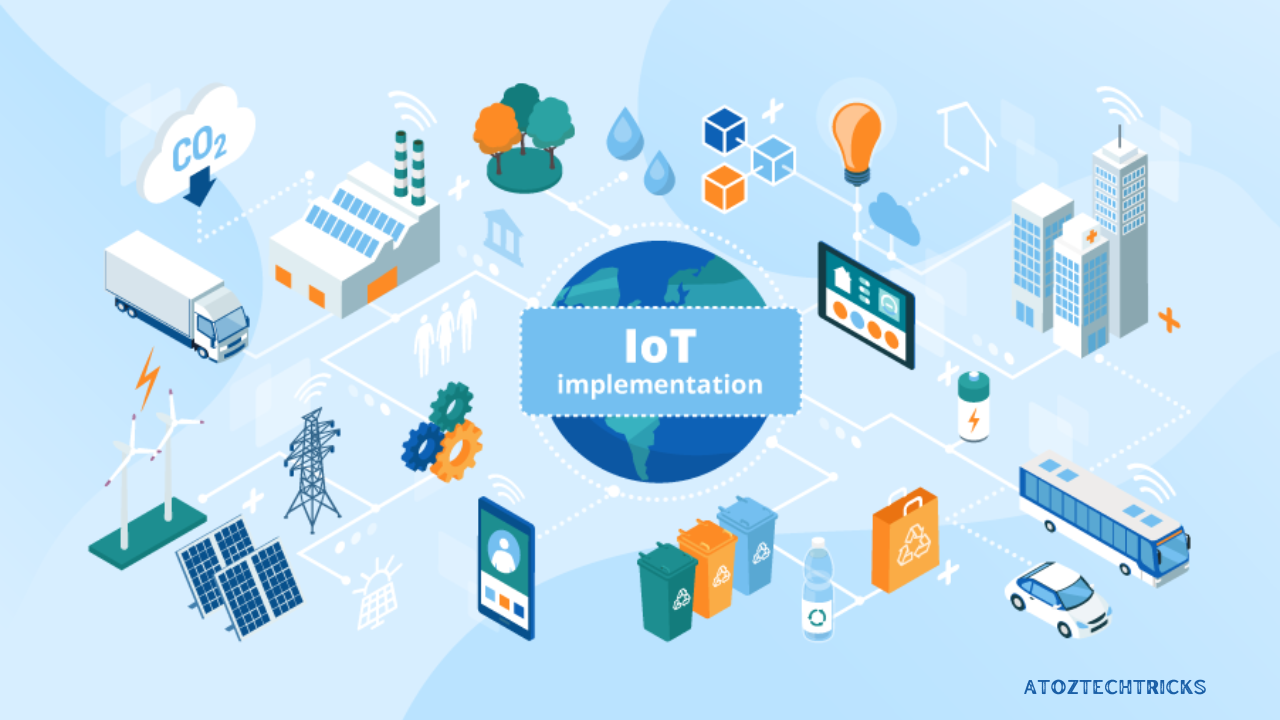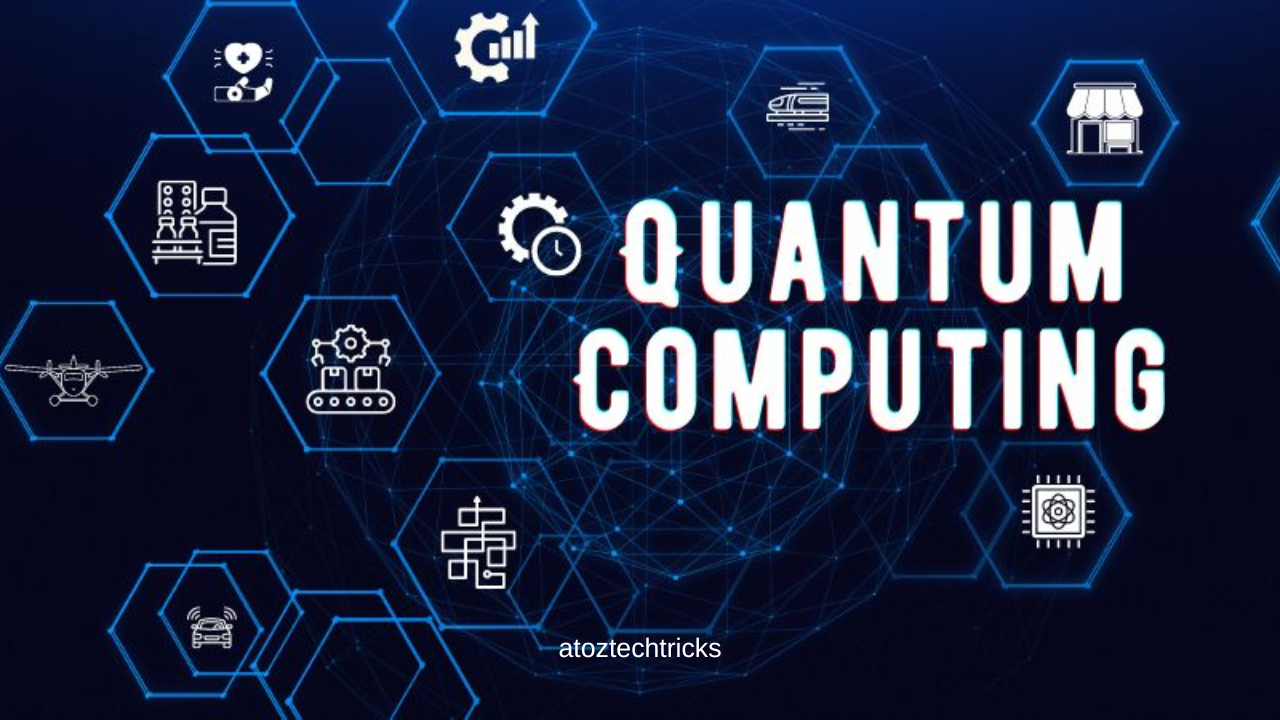Implementing IoT in Business Operations: A Comprehensive Guide
The Internet of Things (IoT) has emerged as a transformative force across various industries, reshaping how businesses operate and deliver value. By connecting physical devices to the internet and enabling data exchange, IoT has opened new possibilities for operational efficiency, innovation, and customer engagement. This article explores how businesses can effectively implement IoT in their operations, from understanding its potential benefits to overcoming challenges and ensuring successful deployment.
Understanding IoT in Business Operations
What is IoT?
The Internet of Things (IoT) refers to a network of interconnected physical devices that collect, share, and act on data through the internet. These devices can range from simple sensors and wearables to complex machinery and infrastructure. By gathering and analyzing real-time data, IoT enables businesses to make informed decisions, automate processes, and enhance productivity.
The Role of IoT in Modern Business
IoT is not just a technological trend; it is a fundamental shift in how businesses operate. It allows companies to monitor and control operations remotely, predict maintenance needs, optimize supply chains, and deliver personalized customer experiences. From manufacturing and logistics to healthcare and retail, IoT is driving innovation across sectors.
Key Benefits of Implementing IoT in Business
- Enhanced Operational Efficiency: IoT devices provide real-time data on equipment performance, energy consumption, and other critical metrics. This allows businesses to optimize processes, reduce downtime, and minimize waste.
- Cost Reduction: By automating tasks and improving resource management, IoT can significantly lower operational costs. Predictive maintenance, for example, can prevent costly equipment failures by addressing issues before they escalate.
- Improved Customer Experience: IoT enables personalized services by gathering data on customer preferences and behaviours. Retailers, for instance, can use IoT to offer tailored recommendations and streamline the shopping experience.
- Innovation and New Revenue Streams: IoT opens up opportunities for new business models, such as subscription services and smart products. Companies can also leverage IoT data to develop innovative products and services that meet emerging customer needs.
- Data-Driven Decision Making: With IoT, businesses have access to vast amounts of data that can be analyzed to gain insights into operations, market trends, and customer behaviour. This data-driven approach leads to more informed and strategic decision-making.

Steps to Implementing IoT in Business Operations
1. Define Clear Objectives
Before diving into IoT implementation, businesses must define clear objectives aligned with their strategic goals. Whether the aim is to enhance operational efficiency, reduce costs, or improve customer satisfaction, having a clear vision will guide the IoT adoption process.
2. Conduct a Feasibility Study
A feasibility study helps determine whether IoT is a viable solution for the business. This involves assessing the current infrastructure, identifying potential use cases, and estimating the costs and benefits. The study should also consider the technical requirements, such as connectivity, data storage, and security.
3. Choose the Right IoT Platform
Selecting the right IoT platform is crucial for the success of the implementation. The platform should support device connectivity, data management, and analytics while being scalable to accommodate future growth. Businesses should also consider the platform’s compatibility with existing systems and its ability to integrate with third-party applications.
4. Ensure Data Security and Privacy
IoT devices collect and transmit sensitive data, making security a top priority. Businesses must implement robust security measures to protect against cyber threats, such as encryption, authentication, and regular software updates. Additionally, they must comply with data privacy regulations and ensure that customer data is handled responsibly.
5. Develop a Scalable IoT Architecture
A scalable IoT architecture is essential for accommodating future growth and changes in the business environment. This includes choosing flexible and modular components, such as cloud-based services, that can be easily upgraded or replaced as needed. The architecture should also support seamless integration with other business systems and processes.
6. Implement IoT in Phases
Implementing IoT in phases allows businesses to manage risks and ensure a smooth transition. Starting with a pilot project or a specific department can help identify potential challenges and refine the implementation strategy. Once the pilot is successful, the IoT solution can be gradually scaled across the organization.
7. Train Employees and Stakeholders
Employee training is essential for the successful adoption of IoT. Businesses should provide comprehensive training programs to help employees understand the technology and its applications. Stakeholders, including management and customers, should also be educated on the benefits and implications of IoT.
8. Monitor and Optimize
After implementation, continuous monitoring and optimization are key to maximizing the value of IoT. Businesses should track the performance of IoT devices, analyze data for insights, and make adjustments as needed. Regular updates and maintenance are also necessary to ensure the system remains secure and efficient.
Cybersecurity Concerns with IoT: Protecting the Connected World
Use Cases of IoT in Business Operations
1. Manufacturing and Industrial IoT (IIoT)
In manufacturing, IoT plays a critical role in optimizing production processes, improving quality control, and reducing downtime. Smart factories equipped with IoT sensors can monitor equipment performance in real time, enabling predictive maintenance and minimizing unplanned outages. IoT also facilitates automation, allowing manufacturers to streamline operations and increase efficiency.
2. Supply Chain and Logistics
IoT enhances supply chain visibility by providing real-time tracking of goods and assets. Businesses can monitor the location, condition, and status of shipments, ensuring timely delivery and reducing the risk of loss or damage. IoT also enables smart inventory management, where connected devices automatically reorder stock when levels run low, reducing the need for manual intervention.
3. Retail and Customer Experience
Retailers are leveraging IoT to create personalized shopping experiences and optimize store operations. IoT devices, such as smart shelves and beacons, can track customer behaviour and preferences, enabling targeted marketing and promotions. In addition, IoT-powered inventory management systems help retailers maintain optimal stock levels and reduce shrinkage.
4. Healthcare and Medical Devices
IoT is revolutionizing healthcare by enabling remote patient monitoring, telemedicine, and smart medical devices. Wearable sensors can track vital signs and send data to healthcare providers in real time, allowing for proactive care and early intervention. IoT also facilitates the management of medical equipment and supplies, ensuring they are always in optimal condition and readily available.
5. Energy Management and Sustainability
IoT is playing a significant role in energy management and sustainability efforts. Businesses can use IoT sensors to monitor energy consumption and optimize usage, reducing costs and environmental impact. Smart grids and meters, powered by IoT, enable efficient energy distribution and real-time monitoring of energy supply and demand.
6. Smart Offices and Building Management
In the workplace, IoT is being used to create smart offices that enhance employee productivity and well-being. IoT devices can control lighting, temperature, and ventilation based on occupancy and preferences, creating a comfortable and energy-efficient environment. IoT also enables smart security systems that monitor access and detect potential threats in real time.

Challenges in Implementing IoT
1. Security Concerns
Security is one of the biggest challenges in IoT implementation. The interconnected nature of IoT devices makes them vulnerable to cyberattacks, and a breach in one device can compromise the entire network. Businesses must invest in robust security measures, such as encryption, multi-factor authentication, and regular software updates, to protect their IoT systems.
2. Data Privacy Issues
IoT devices collect vast amounts of data, raising concerns about data privacy and compliance with regulations like GDPR. Businesses must ensure that they have the necessary consent to collect and use data and that they handle it responsibly. This includes implementing data anonymization techniques and providing transparency to customers about how their data is used.
3. Integration with Legacy Systems
Integrating IoT with existing legacy systems can be challenging, especially if those systems were not designed to support modern technologies. Businesses may need to upgrade or replace outdated infrastructure, which can be costly and time-consuming. Ensuring seamless integration requires careful planning and the selection of IoT solutions that are compatible with existing systems.
4. High Implementation Costs
The initial investment required for IoT implementation can be high, including the cost of devices, infrastructure, software, and ongoing maintenance. Small and medium-sized businesses may find it difficult to justify these costs, especially if the return on investment is not immediately apparent. Businesses must conduct a thorough cost-benefit analysis and explore financing options to manage these expenses.
5. Data Management and Analytics
IoT generates vast amounts of data that must be collected, stored, and analyzed effectively. Managing this data can be overwhelming, especially if the business lacks the necessary expertise or infrastructure. Businesses must invest in advanced analytics tools and data management solutions to extract valuable insights from IoT data.
6. Lack of Standardization
The lack of standardization in IoT technology can create compatibility issues between different devices and platforms. This fragmentation makes it difficult for businesses to develop a cohesive IoT strategy and ensure interoperability across their systems. Industry-wide standards and protocols are needed to address these challenges and facilitate the widespread adoption of IoT.
The Internet of Things (IoT) in Smart Homes: Revolutionizing Modern Living
Best Practices for Successful IoT Implementation
1. Start Small and Scale Gradually
Rather than implementing IoT across the entire organization at once, businesses should start with a small pilot project. This allows them to test the technology, identify potential challenges, and make improvements before scaling. Starting small also helps build confidence among stakeholders and ensures that the business is ready for a broader rollout.
2. Collaborate with IoT Experts
Partnering with IoT experts, such as consultants, technology providers, and system integrators, can greatly enhance the success of the implementation. These experts can provide valuable insights, help with the selection of the right technologies, and ensure that the deployment is carried out smoothly. Collaboration with experts also reduces the risk of costly mistakes and delays.
3. Focus on User Experience
The success of IoT implementation depends on how well it is adopted by employees and customers. Businesses should focus on creating a seamless user experience by designing intuitive interfaces, providing adequate training, and addressing any concerns. Ensuring that the IoT solution is easy to use and adds value to the end-users is critical for long-term success.
4. Prioritize Security from the Start
Security should be a top priority from the beginning of the IoT implementation process. Businesses must conduct thorough risk assessments, implement strong security measures, and continuously monitor for vulnerabilities. Regular security audits and updates are essential to keep the IoT system secure and compliant with industry standards.
5. Leverage Data Analytics for Continuous Improvement
IoT generates a wealth of data that can be used for continuous improvement. Businesses should invest in advanced analytics tools to gain insights from this data and identify areas for optimization. By leveraging data analytics, businesses can make informed decisions, enhance operational efficiency, and drive innovation.
6. Foster a Culture of Innovation
Successful IoT implementation requires a culture of innovation where employees are encouraged to experiment, share ideas, and embrace new technologies. Businesses should create an environment that supports creativity and provides the resources needed for innovation. This culture will not only facilitate the adoption of IoT but also drive long-term business growth.

The Future of IoT in Business Operations
The future of IoT in business operations is promising, with advancements in technology, such as 5G, artificial intelligence (AI), and edge computing, set to further enhance its capabilities. As IoT continues to evolve, businesses can expect even greater levels of automation, efficiency, and innovation.
1. The Rise of Edge Computing
Edge computing, which involves processing data closer to the source of generation, is expected to play a significant role in the future of IoT. This approach reduces latency, enhances real-time decision-making, and reduces the reliance on centralized cloud infrastructure. Businesses can leverage edge computing to create more responsive and efficient IoT systems.
2. Integration with Artificial Intelligence
The integration of AI with IoT will enable businesses to automate more complex tasks, such as predictive analytics, anomaly detection, and autonomous decision-making. AI-powered IoT systems can analyze vast amounts of data, learn from patterns, and make intelligent decisions without human intervention. This will lead to smarter and more adaptive business operations.
3. Expansion of IoT Applications
As IoT technology becomes more advanced and affordable, its applications will expand across various industries. Businesses will find new ways to leverage IoT for everything from smart cities and connected vehicles to personalized healthcare and advanced robotics. The possibilities are endless, and the impact of IoT on business operations will continue to grow.
4. Greater Focus on Sustainability
Sustainability will be a key focus in the future of IoT, with businesses using IoT to reduce their environmental footprint and promote sustainable practices. IoT can help monitor and optimize energy usage, reduce waste, and support the development of green technologies. As businesses become more environmentally conscious, IoT will play a critical role in achieving sustainability goals.
5. Evolution of IoT Standards and Regulations
The lack of standardization has been a challenge in the IoT industry, but efforts are underway to develop industry-wide standards and regulations. These standards will facilitate interoperability, enhance security, and promote the widespread adoption of IoT. Businesses can expect more clarity and support from regulatory bodies as the IoT ecosystem matures.
IoT in Healthcare: Revolutionizing Patient Care and Medical Systems
Implementing IoT in business operations is a strategic move that can unlock significant value, from enhanced efficiency and cost savings to innovation and improved customer experiences. However, successful IoT adoption requires careful planning, a clear understanding of objectives, and a commitment to security and data privacy. By following best practices and staying informed about emerging trends, businesses can harness the full potential of IoT and position themselves for long-term success in a connected world.




Post Comment